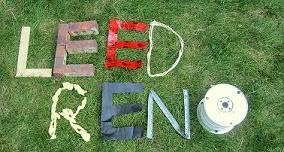Essentially, I grew concerned about the existence of HFC-134a in my foam insulation products. As a result I switched my rigid insulation from Dow Styrofoam to Isolofoam's Isofoil although I will probably be trying out other rigid foam products as well. I have also stopped using Touch n' Foam's two part spray foam.
I won't lie, the Touch n' Foam product pissed me off. I was surprised by the amount of HFC in it and the environmental impact it would have. To the point that I wrote Rona / Reno-Depot and asked them why they carry it. I felt their response skirted the question and also had the manufacturer deferring all responsibility for the product
"Good day Mr Lilley, Here is the response we received form the manufacturer. The propellants used in our cylinders were chosen by both the Canadian government and US government for this type of product. A different type of propellant was used in the past, but due to flammability, manufactures were forced to change. At this time, there are no alternatives due to regulations. If you should need further information don't hesitate to contact us again. Thank you for your support and have a nice day."
I am following up further with them to see if I can get an actual answer.
I also contacted Dow Chemicals. My only concern with dropping the Styrofoam was that the article I was basing the decision on said "I have to note here that I’m not 100% sure that XPS is made with HFC-134a; manufacturers are unwilling to divulge the exact blowing agents they use". Wanting to make sure I wasn't stopping use of a product unjustly (and then blogging about it), I went to the source. I emailed Dow asking them about the charge and what they used as a blowing agent. I will give them kudos for a providing a quick professional reply. They never did explicitly state their blowing agent but provided GWP numbers in line with HFC-134a. Even if it isn't the exact agent the end result would be the same. Here are their complete responses (from two different emails):
"I'm following up on your email and to conform that Dow Building Solutions (DBS) had successfully converted our North American manufacturing facility that manufactures STYROFOAM(tm) Extruded Polystyrene Insulation products, which includes Clademate, to its new zero ozone-depleting, no-VOC foaming agent technology. STYROFOAM Extruded polystyrene insulation is HCFC and CFC free.
The proprietary formulation substitutes the hydrochloro-fluorocarbon (HCFC) 142b, an ozone-depleting compound that U.S. and Canadian regulations under the Montreal Protocol require to be phased out by January 1, 2010 in North America, with a non-ozone depleting compound. It enables Dow's North American customers to continue receiving STYROFOAM insulation with the same product performance and cost-leadership position, and reflects Dow's commitment, as part of its 2015 Sustainability Goals for Addressing Climate Change, to significantly reduce its greenhouse gas emissionsany further questions on this matter, do not hesitate to contact me at the phone number shown below my signature.
Dow Building Solutions has completed a rigorous, external assessment of its building insulation products conducted by MBDC (McDonough Braungart Design Chemistry, LLC), a global sustainability consulting and product certification firm. STYROFOAM SIS Structural Insulated Sheathing, STYROFOAM Brand Extruded Polystyrene (XPS) Foam Insulation, THERMAX(tm) (ci) Exterior Insulation, STYROFOAM(tm) Brand Spray Polyurethane Foam (SPF) Insulation, and SAFETOUCH(tm) Fiberglass-Free Insulation have all achieved Cradle to Cradle(r) Certification , a process that assesses products for their ingredients' human health, environmental health and recyclability profiles. Dow products that have achieved Cradle to Cradle(r) Certification are eligible for points that contribute to various building certifications, such as the U.S. Green Building Council (USGBC) Leadership in Energy & Environmental Design (LEED ) Rating Systems and National Association of Home Builders' (NAHB ) National Green Building Program. Certified products can be listed under the U.S. EPA Environmentally Preferable Purchasing Program, as well as several other environmentally conscious product purchasing programs."
"XPS has a ozone depletion number of 0 and a global warming potential of 1300, which reduced the GWP100 from previous while maintaining the insulation’s thermal and physical properties."

Styrofoam insulation is strong enough, so it can be used in all insulation applications like walls, roofs, ceilings and load bearing areas under the slabs and wooden floors. Styrofoam insulation will not sag or slump. No other insulation material can match strength of Styrofoam insulation.
ReplyDeleteKeeping the climatic conditions of Ireland in mind, you might not find many Insulation Contractors that offer complete range of insulation solutions.
ReplyDeleteIt's great idea,It can be used in all insulation applications like walls, roofs, ceilings and load bearing areas..
ReplyDeleteIndustrial water heater
residential tankless water heater
Great write-up, I am a big believer in commenting on blogs to inform the blog writers know that they’ve added something worthwhile to the world wide web!.. attic insulation removal and replacement
ReplyDelete